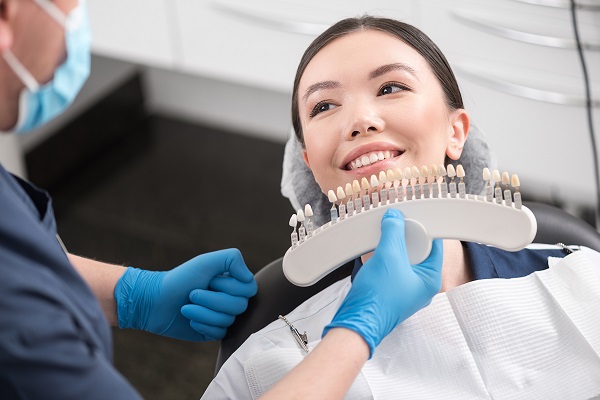The Veneers Process as Explained by a Dentist

If you want to change your smile, you can ask your dentist about getting dental veneers. Veneers are teeth coverings made from porcelain or composite resin. They are commonly used to cover stains on the teeth, but they can also repair a chipped or fractured tooth. Continue reading to know what the veneers process involves.
Getting dental veneers
The process of getting dental veneers starts with a consultation with a dentist. During the appointment, the dentist will clarify the steps of getting veneers and the pros and cons to ensure patients can make an informed decision regarding their smile. For instance, a crown might be a better option to restore a delicate tooth weakened by severe decay or injury.
Veneers are typically used on the front row teeth. For the back teeth, the dentist might suggest other dental restoration options. Veneers are useful for fixing dental problems such as:
- A chipped tooth
- Tooth discoloration
- Unevenly shaped teeth
- Minor gaps between front teeth
Preparing the teeth for veneers
Since veneers are bonded to the front side of the teeth, the dentist will trim off a small portion of the enamel to allow the veneer to fit over the teeth without looking big and bulky. The dentist may provide local anesthesia when prepping the teeth to make the patient more comfortable. An impression of the teeth will be taken and sent to the lab that will produce the veneer.
It takes about one or two weeks to complete the production of the veneers. While the patient waits, the dentist will place temporary coverings on the teeth to minimize sensitivity.
When the patient returns for the second appointment, the dental veneers will be available. The dentist might need to make minor adjustments to the color and fitting of the veneers. This aspect of the process is designed to ensure the veneers look and feel natural. For instance, the dentist may slightly alter the color of the veneers to match that of the existing tooth enamel.
If the dentist is pleased with the appearance of the veneers, they will start by preparing the affected teeth. Each tooth’s front surface will be cleaned, polished and etched so that the veneer can adhere strongly to the teeth for many years. The dentist will use dental cement or adhesive to bond the veneers to the teeth’s surface. After placing the veneers, the dental professional will clean off any excess dental cement and examine the patient’s bite to ensure they align correctly.
Point to note
Dental veneers are a conservative treatment to enhance the appearance of your smile without having to remove too much of the natural tooth structure (as is the case with crowns) or completely remove the teeth for implants. However, not everyone can get dental veneers. For instance, patients with untreated gum disease, thin enamel or weakened teeth may need to consider other options.
In conclusion
The dentist will evaluate your oral health and dental history before recommending the best option to restore the appearance of your smile. To learn more about dental veneers, contact our dental office for a consultation.
Request an appointment here: https://www.mytotaldentistry.com or call McCarthy Dentistry at (740) 546-5178 for an appointment in our Marietta office.
Check out what others are saying about our services on Yelp: Read our Yelp reviews.
Recent Posts
An Invisalign dentist offers patients a clear, step-by-step treatment plan that transforms smiles while maintaining comfort and convenience. This orthodontic option uses a series of custom aligners to gradually shift teeth into ideal positions, with progress monitored at regular intervals. Understanding the treatment process month by month helps patients prepare for each stage and stay…
Over the years, tooth extraction has become more seamless than it once was. Many advancements have been made, which make the procedure more comfortable and less painful. However, it still helps to know what to expect so you can prepare.Getting a tooth extracted is not as scary as most think. In fact, most extractions only…
Tooth extraction is one of the most common procedures in dentistry. This article discusses extraction aftercare guidelines to follow to achieve optimal recovery. Complications after a tooth extraction are rare but possible. The common ones include bleeding, dry sockets, and infection. Post-operative care is important to avoid these complications.The body starts healing immediately after the…
Many conditions can result in a tooth extraction, all of which boil down to the state of the tooth. There are two main types: simple and surgical. Take a closer look at each option and why we may recommend them.The goal of any general dentist is to preserve the natural teeth for as long as…


